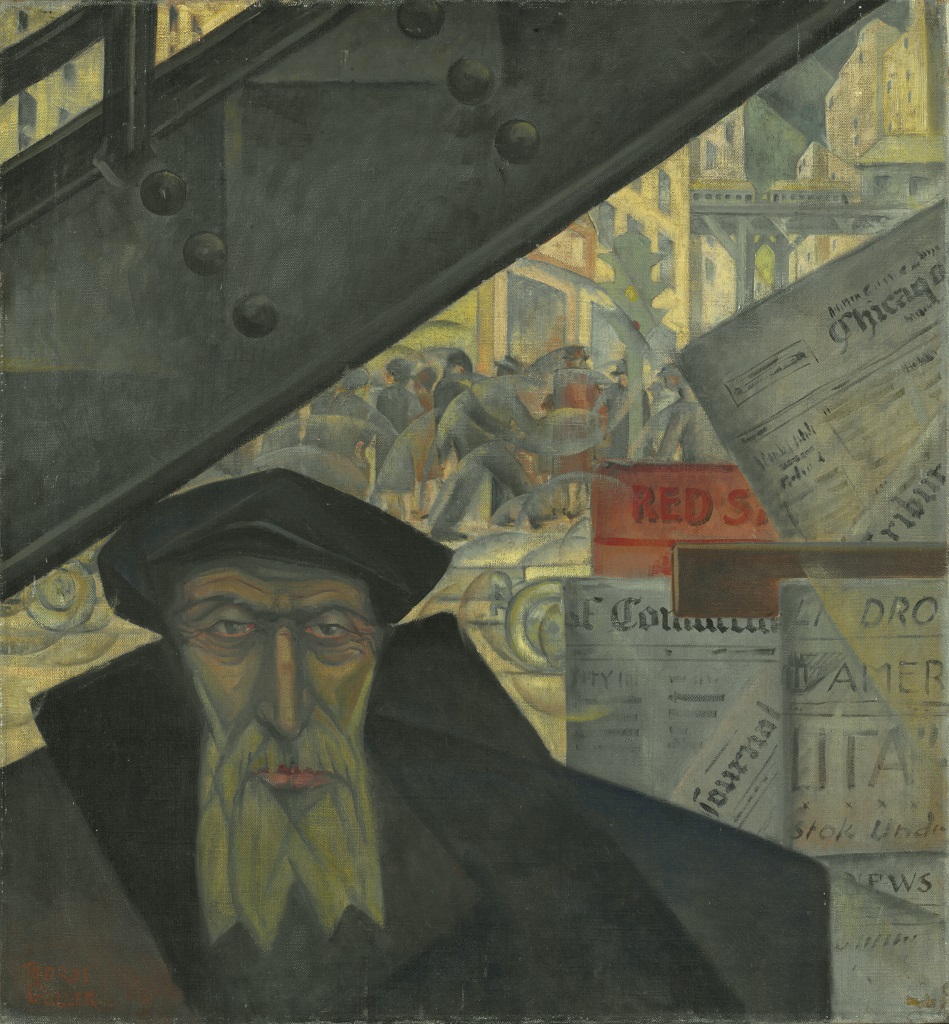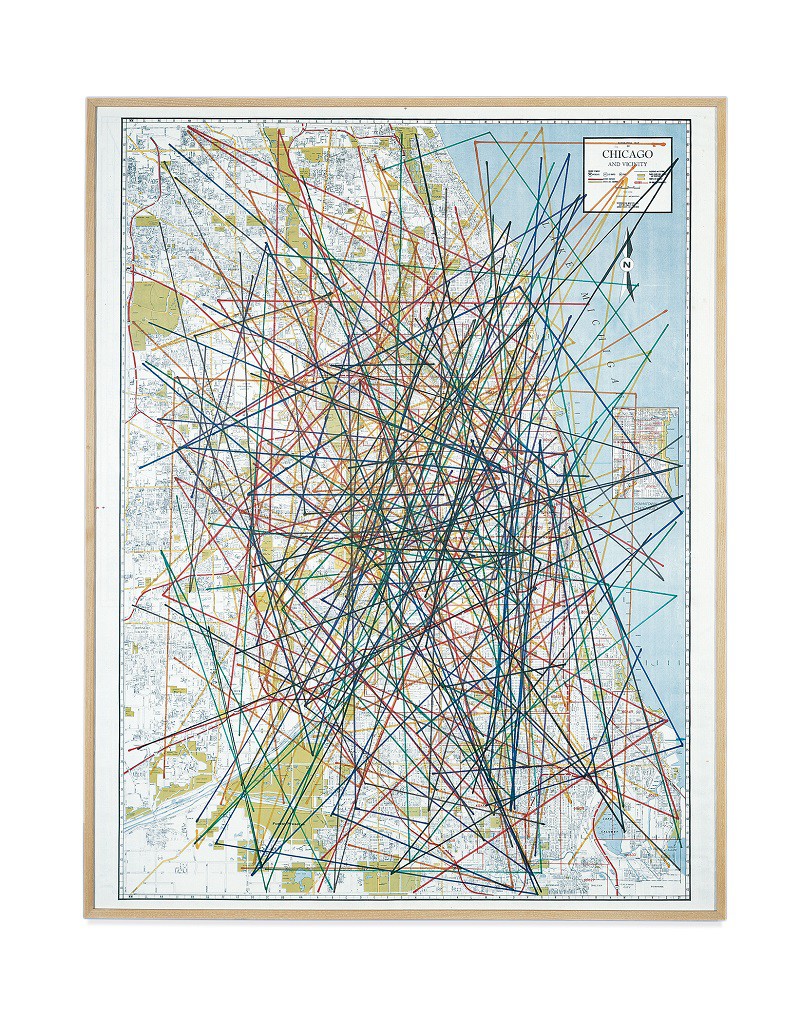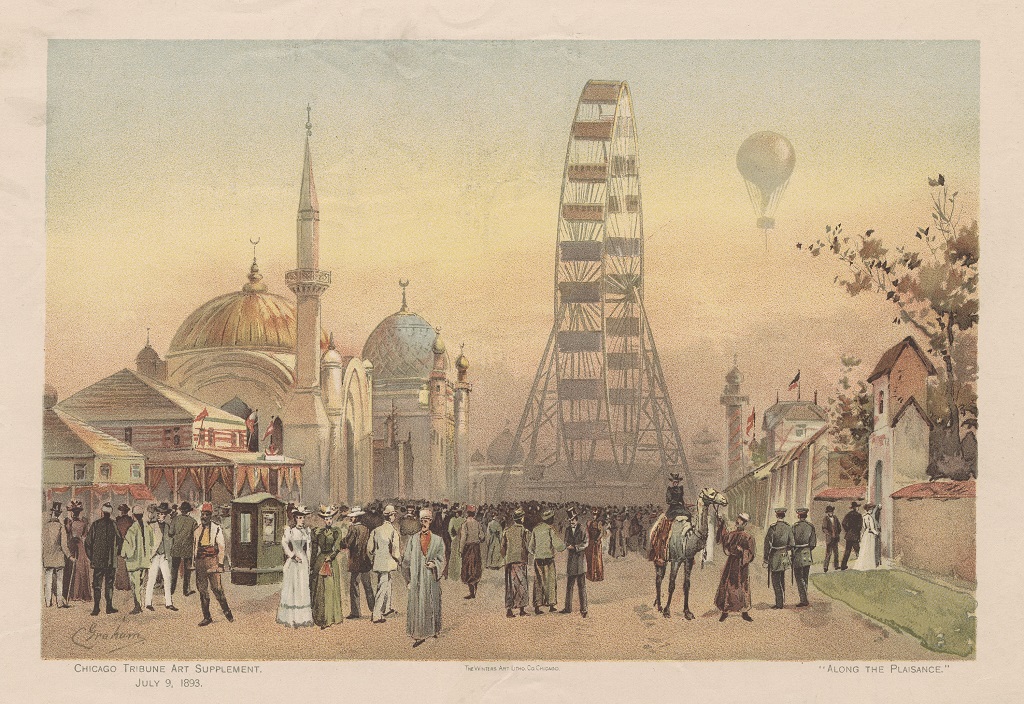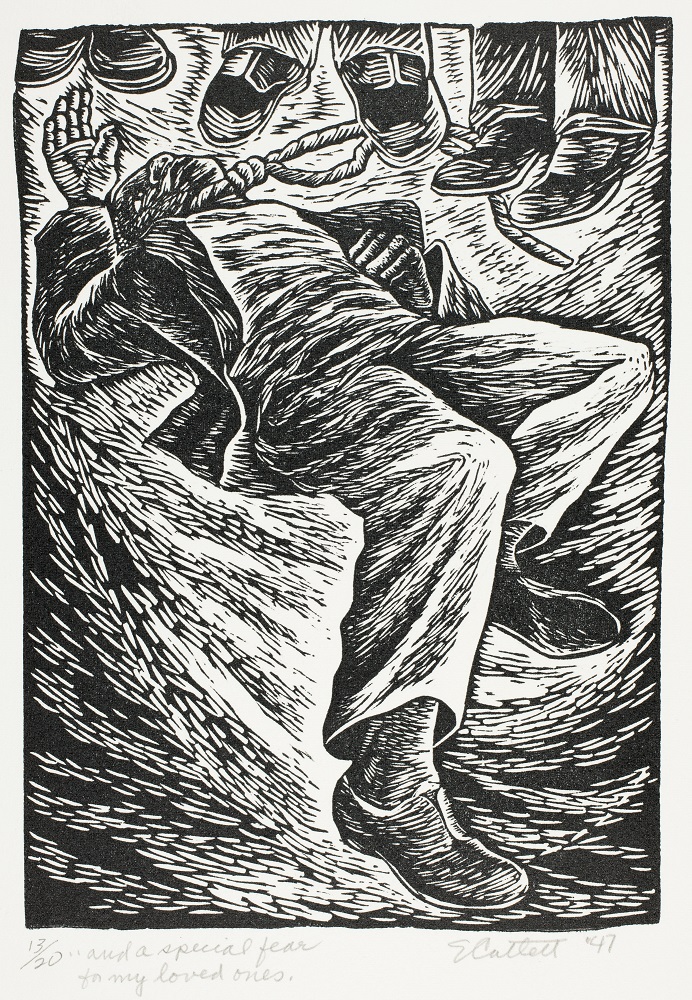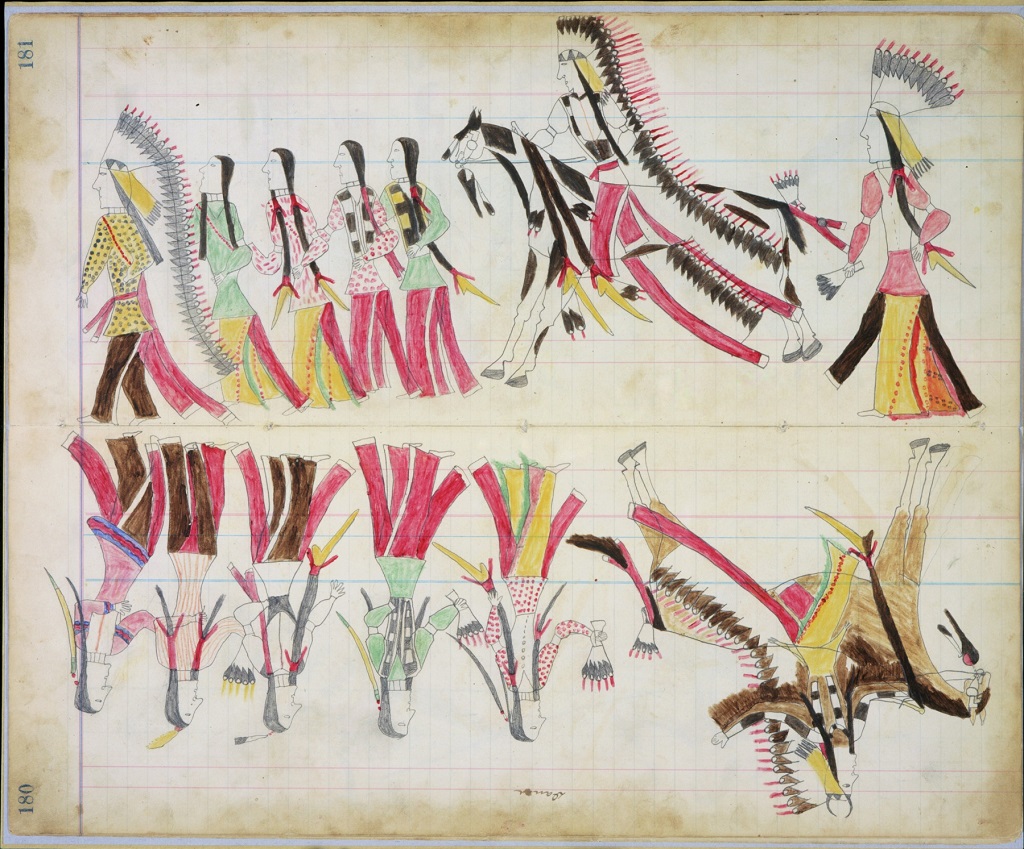Author:
The Art Institute of Chicago Museum Education Department
At First Glance
How would you describe the man in this painting? Where do you think he is? Does he appear to fit into this place? Why or why not? How do you think he feels about being in this setting?
Read to Build Knowledge
The old man looking out towards us has turned away from the busy, modern city behind him. Other details in the painting accentuate his separation from this environment. His traditional black clothing, long gray beard, and serious gaze are formed by hard lines and sharp angles, and he stands in the shadows. In contrast, the world beyond is made up of dynamic, overlapping shapes and people, and is bright with light, color, and activity. Next to the man, also in shadow, is a vendor’s stand with newspapers in multiple languages. He may be selling those newspapers, or they may just be a reminder to viewers that the city shown here—Chicago in the 1920s—was home to many immigrants, who like him moved to America from around the globe. Despite his presence in Chicago, the man is not fully part of the modern world around him, distinguished by skyscrapers and the elevated train. Instead, by connecting him to the foreign languages of the newspapers, presenting him in traditional clothing and placing him in the shadows, the artist associates this man with the old world from which he and so many other immigrants came—the more traditional, often rural, communities of Eastern Europe.
In spite of all the differences between the foreground and background of this painting, Chicago’s elevated train provides a connection between these two strange worlds—the old and the new. While the old man stands underneath the stairs of the train tracks, another section of the tracks is visible snaking between the modern skyscrapers in the distance. Therefore the train, a symbol of the modern city, might also be a reminder of the migration and journeys that brought so many people to Chicago.
The Jewish artist Todros Geller came with his family from the Ukraine to North America in 1906. Like many Jewish families in Eastern Europe, they left their homes because of religious persecution. Just over ten years later, Geller made Chicago his home and became a popular and influential artist in the city, especially in the Jewish community. The painting, Strange Worlds, like much of Geller’s work, addresses the challenges for immigrants in a new and unfamiliar place. The message of Strange Worlds was so familiar to Chicago’s Jewish residents that many of them had reproductions of the painting hanging in their homes.
Analyze and Interpret
- What does Todros Geller’s Strange Worlds tell us about the experience of assimilation? What details in the painting communicate those ideas?
- Why does Todros Geller use a train as a symbol in this painting?
- Why might Todros Geller sympathize with the old man in the image?
- Can you relate to the old man’s experience in Chicago? What have you experienced that was new or unfamiliar? Have you started at a new school? Have you moved to a new neighborhood? Have you ever been someplace where you didn’t speak the language or didn’t feel that you fit in? What was that like?
For further reading (teachers)
Barter, Judith A., et al. American Modernism at The Art Institute of Chicago: From World War I to 1955. Chicago: The Art Institute of Chicago and Yale University Press, 2009.
Cutler, Irving, The Jews of Chicago: From Shtetl to Suburb. Chicago: University of Illinois Press, 1996.
Oehler, Sarah Kelly. They Seek a City: Chicago and the Art of Migration. Chicago: The Art Institute of Chicago, 2013.
Modernism in the New City: Chicago Artists, 1920-1950. “Todros Geller,” http://www.chicagomodern.org/artists/todros_geller/

